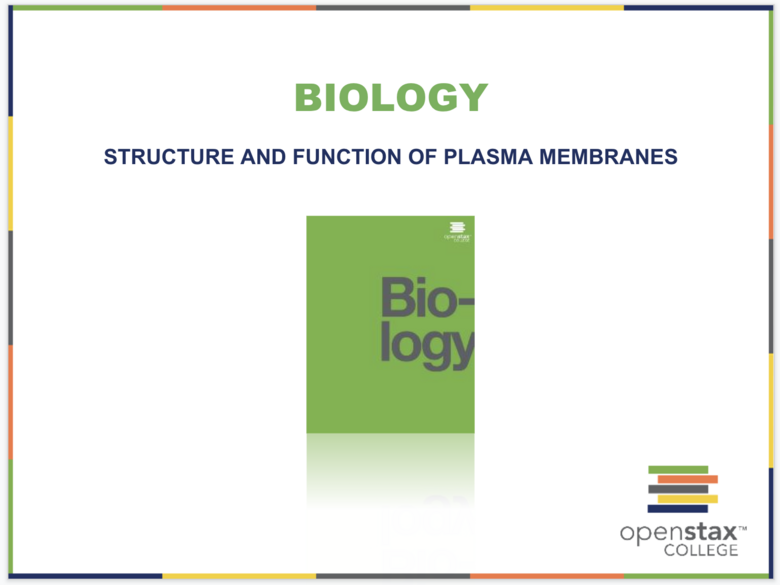Structure and Function of Plasma Membranes Resources

Overview
The plasma membrane, the cell membrane, has many functions, but the most basic one is to define the cell's borders and keep the cell functional. The plasma membrane is selectively permeable. This means that the membrane allows some materials to freely enter or leave the cell, while other materials cannot move freely, but require a specialized structure, and occasionally, even energy investment for crossing.
Learning Objectives
Learning Objectives (Biology I TAGs)
10. Describe current models of cell membrane structure and function.
Recommended Textbook Resources
Chapter 5: Structure and Function of Plasma Membrane
OpenStax: Biology 2e
Chapter 5, Plasma membrane, A cell’s plasma membrane defines the cell, outlines its borders, and determines the nature of its interaction with its environment. Cells exclude some substances, take in others, and excrete still others, all in controlled quantities. The plasma membrane must be very flexible to allow certain cells, such as red and white blood cells, to change shape as they pass through narrow capillaries. These are the more obvious plasma membrane functions. In addition, the plasma membrane's surface carries markers that allow cells to recognize one another, which is vital for tissue and organ formation during early development, and which later plays a role in the immune response's “self” versus “non-self” distinction.
Among the most sophisticated plasma membrane functions is the ability for complex, integral proteins, receptors to transmit signals. These proteins act both as extracellular input receivers and as intracellular processing activators. These membrane receptors provide extracellular attachment sites for effectors like hormones and growth factors, and they activate intracellular response cascades when their effectors are bound. Occasionally, viruses hijack receptors (HIV, human immunodeficiency virus, is one example) that use them to gain entry into cells, and at times, the genes encoding receptors become mutated, causing the signal transduction process to malfunction with disastrous consequences.
Student Assessment Activities
Student Assessment Activities are below; instructors can also Structure and Function of Plasma Membrane Student Activities Word File or Structure and Function of Plasma Membrane Google Doc.
Project 1:
Compare and contrast passive, active, and bulk cellular transport mechanisms.
Why do cells need three (Passive-, Active-, and Bulk-transport) types of transport mechanisms?
Describe the structure(s) of the plasma membrane that allows it to be “selectively permeable.”
Project 2:
Find the correct answers to the end of the chapter “Review Questions.” Note the page number on which you found the answer. Be prepared to share and explain your answers in a group setting.
Project 3:
Answer the end of the chapter “Critical Thinking Questions.”

